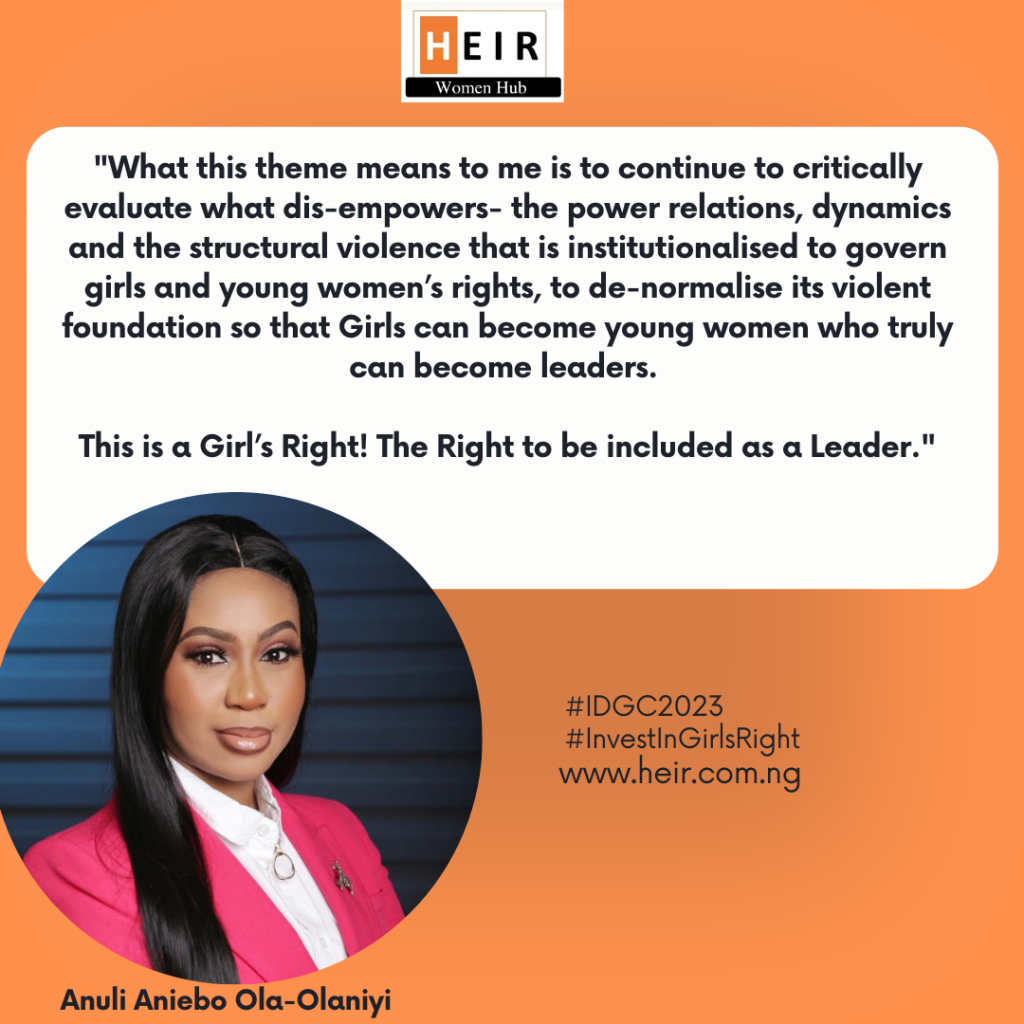In trying to unpack this theme, I reflected on the power dynamics and relations in order to try to re-think a realistic and sustainable possibility of reimagining girls as future leaders.
Some institutions of power, discipline, and orientation across platforms have settled on projecting a discourse and the normalization of who a leader is (or can be) and that whenever a person is imagined as one, that picture is not a Girl.
This ideology of these institutions, gatekeepers and duty bearers, have utilised power dynamics to their own disadvantage- I say this as evidenced by the sprinkled number of women across some positions of authority and senior leadership roles as such institutions do need to still consider the important work of intentionally mainstreaming gender equity.
Who?, What? Why? is my question. Who is behind the power dynamics? What are the future projections if mindsets remain unchanged? Why is leadership heteronormative?
While themes and hashtags give visibility and can push a curated narrative, one must be mindful to avoid a self-serving agenda. Girls and young women, a group categorised and marginalised by some institutions of power, are policed, disciplined, judged, silenced, shamed, and de-centralised by the same institutions.
What this theme means to me is to continue to critically evaluate what dis-.empowers- the power relations, dynamics, and the structural violence that is institutionalised to govern girls and young women’s rights, to de-normalise its violent foundation so that Girls can become young women who truly can become leaders.
This is a Girl’s Right! The Right to be included as a Leader.
Añuli
Girl2Leader2023 #IDGC #idgc2023 #womenfocus #womenleadership #woman #girl #girlchildeducation

